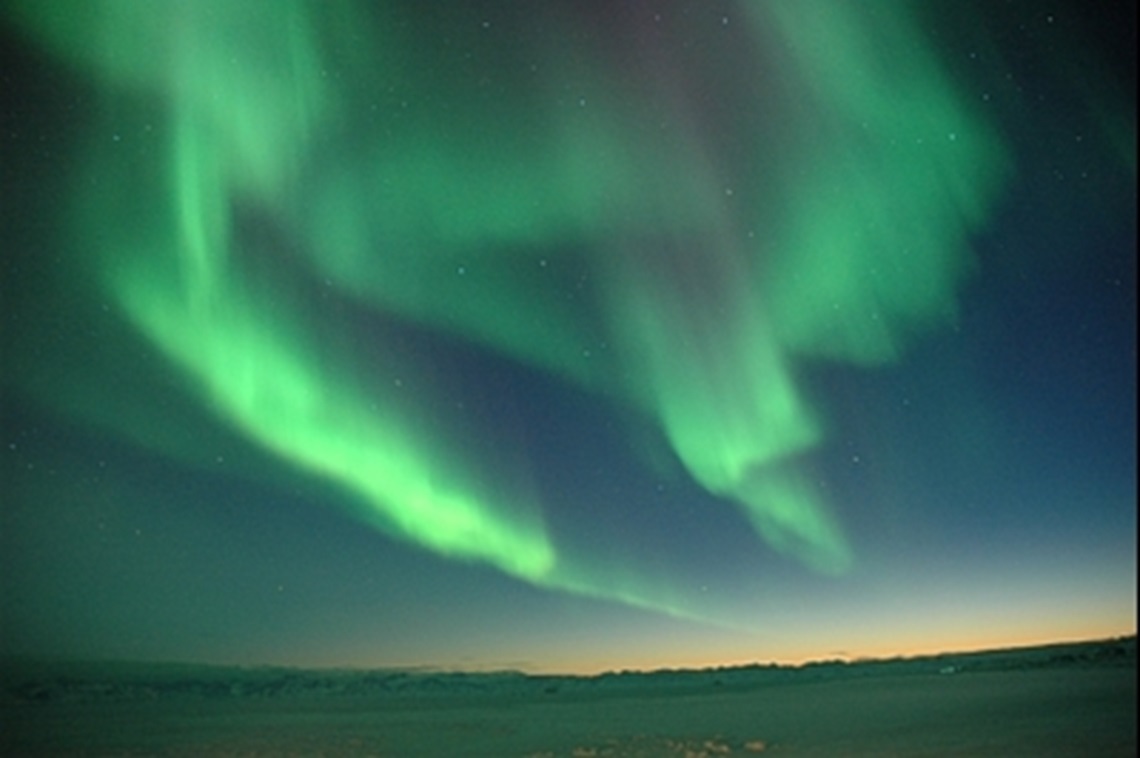
The Midnight Sun and Northern Lights
The far northern location of Ilulissat Icefjord is characterized by site specific light phenomena which you see all year round. Only very rarely do these phenomena occur outside the Polar Regions.
The Midnight Sun and the Polar Night
From 21 May to 24 July you see the midnight sun at Ilulissat Icefjord. In addition, the nights become very bright approx. one month before and after the phase of the midnight sun. The polar night, where the sun does not rise above the horizon, lasts from 26 November to 13 January.
The months of polar night and midnight sun which occur at Ilulissat are caused by the earth’s inclination axis. It turns the Arctic Region away from the sun during winter and towards the sun during summer.
The months of polar night and midnight sun which occur at Ilulissat are caused by the earth’s inclination axis. It turns the Arctic Region away from the sun during winter and towards the sun during summer.

The polar circle, which is positioned at 66.33 degrees northern latitude, more or less demarcates the global boundary north of which you find the polar night and the midnight sun.
The further north of the polar circle you get, the longer the phases of the polar night and the midnight sun will last. For instance at Qaanaaq in the northernmost part of Greenland you find that the phases of the polar night and the midnight sun last for approx. four months. In Nuuk, south of the polar circle, these phenomena do not exist.
The further north of the polar circle you get, the longer the phases of the polar night and the midnight sun will last. For instance at Qaanaaq in the northernmost part of Greenland you find that the phases of the polar night and the midnight sun last for approx. four months. In Nuuk, south of the polar circle, these phenomena do not exist.
Northern Lights
Northern lights are a daily phenomenon in the Polar Regions, especially locally in the hours around midnight. Northern lights occur on a daily basis, but cannot be seen during the summer months, because there is too much light in the sky. At Ilulissat you can see the northern lights on clear nights from September to March. In the southern hemisphere the phenomenon is called southern lights. Northern lights occur when electrically charged, high velocity particles are propelled into the earth’s magnetic field by solar winds at heights of between 90 to 500 kilometers. This occurs at its most extreme and with the highest frequency during magnetic storms caused by volcanic-like eruptions on the sun. These eruptions occur in cycles of approx. 11 years. The most recent peak of solar activity was in the years 2001-2002.

Oxygen atoms generate the green and the red colours, while for instance nitrogen components result in blue and violet. The colours of the northern lights are determined by the force of the electrically charged particles, since the charging of oxygen and nitrogen atoms requires different amounts of energy.
Read more about northern lights at space.com.
Read more about northern lights at space.com.
